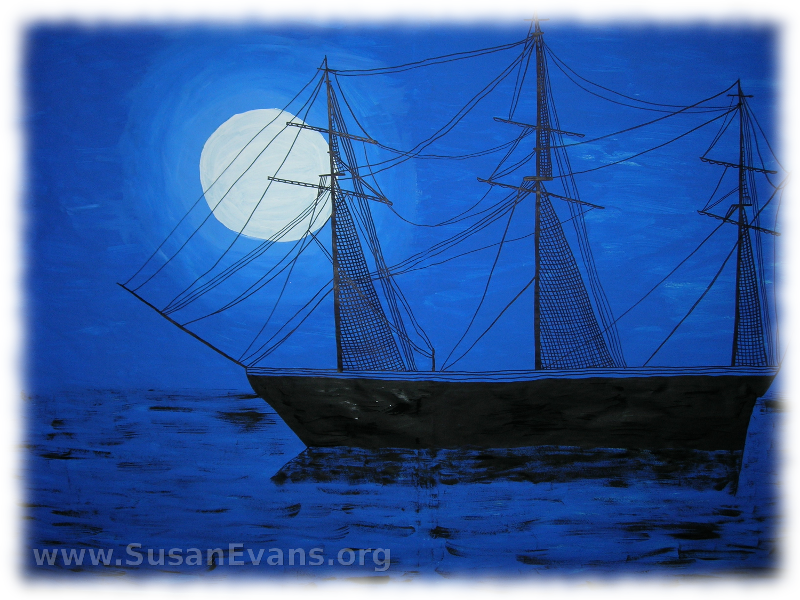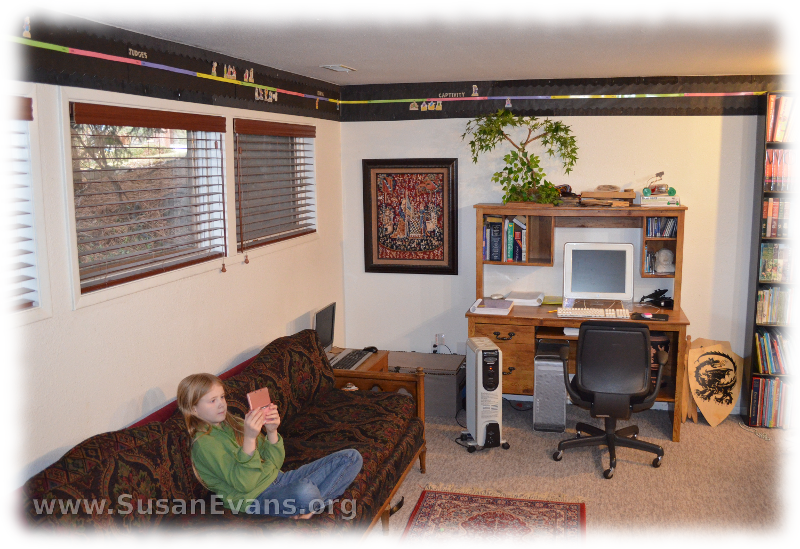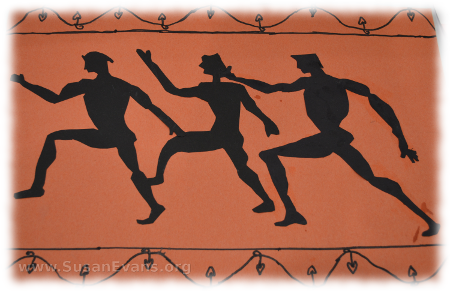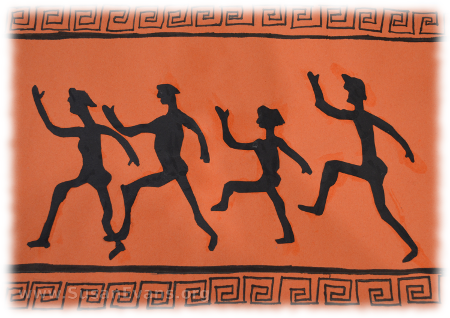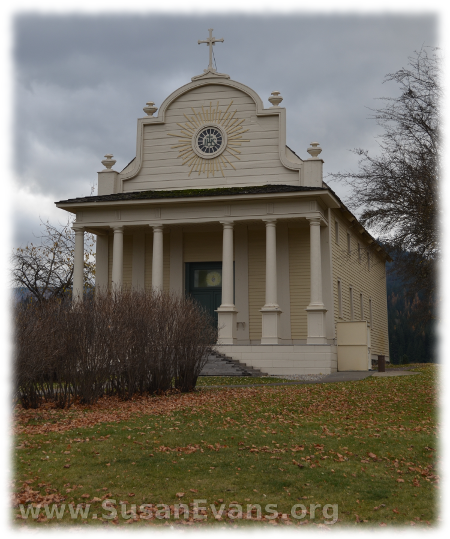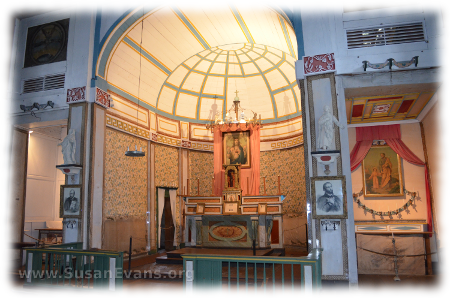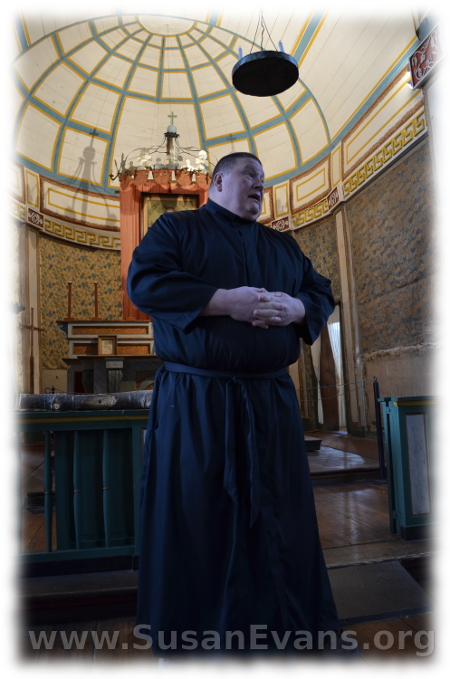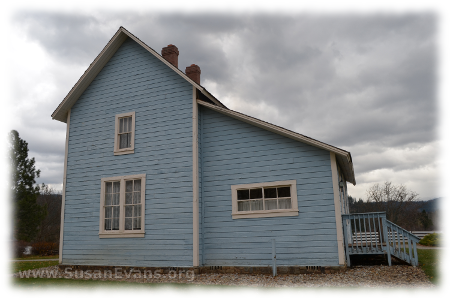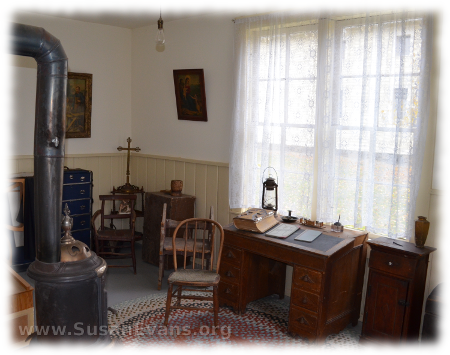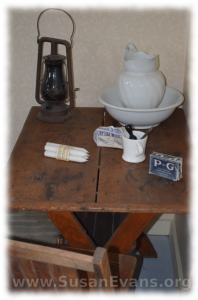I’m shocked at how good this “Ship in the Moonlight” backdrop came out! It was pretty easy to paint. I’m going to show you the steps I went through to paint this scene. I painted it as one of the backdrops for my creative writing class: Time Travel: Writing Historical Fiction. It represents “The Midnight Ride of Paul Revere,” where Paul Revere waited to see if he should put one lamp or two in the church tower, to indicate whether or not the British were coming by land or by sea. The famous poem by Henry Wadsworth Longfellow was memorized by each of my three sons years ago, when they recited it while wearing a three-cornered hat.
How to Paint a Ship in the Moonlight:
- Tape a large piece of butcher paper to a wall or large window. I used packing tape to make sure it wouldn’t fall off my glass sliding door.
- Grab your dark blue tempera paint, and paint the entire paper except for a circle, which will be the moon. (Make the moon larger than you want it, because you will be blending the white into the blue in just a minute.)
- Paint the moon white, and carefully blend in the blue in circles around the moon. This was surprisingly easy.
- Let the background dry overnight.
- Get a black permanent marker and draw a ship, using a picture from a book. The more details you put in for the rigging, the more impressive it will look.
- Fill in the bottom part of the ship with black tempera paint. Then get a fanned paint brush, and swoosh black paint lightly for the water of the ocean. The water took me maybe 10 minutes to paint. I made a shadow for the ship, and I filled it in with more swooshes of the fanned brush.
Your “Ship in the Moonight” backdrop is now complete! You can use it to recite “Paul Revere’s Ride”, re-enact night scenes from history, or leave it hanging on your wall as a work of art.
